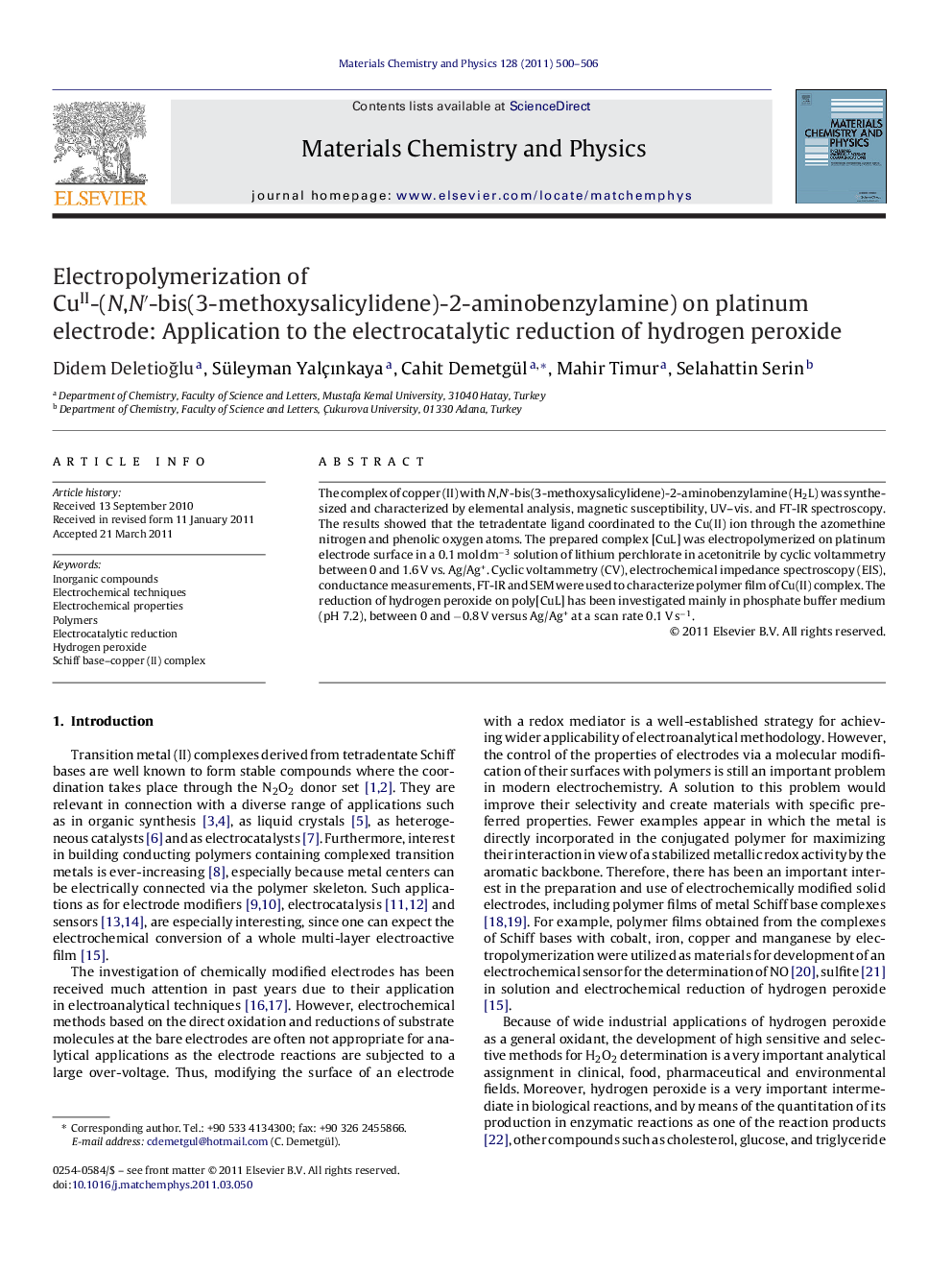| Article ID | Journal | Published Year | Pages | File Type |
|---|---|---|---|---|
| 1524902 | Materials Chemistry and Physics | 2011 | 7 Pages |
The complex of copper (II) with N,N′-bis(3-methoxysalicylidene)-2-aminobenzylamine (H2L) was synthesized and characterized by elemental analysis, magnetic susceptibility, UV–vis. and FT-IR spectroscopy. The results showed that the tetradentate ligand coordinated to the Cu(II) ion through the azomethine nitrogen and phenolic oxygen atoms. The prepared complex [CuL] was electropolymerized on platinum electrode surface in a 0.1 mol dm−3 solution of lithium perchlorate in acetonitrile by cyclic voltammetry between 0 and 1.6 V vs. Ag/Ag+. Cyclic voltammetry (CV), electrochemical impedance spectroscopy (EIS), conductance measurements, FT-IR and SEM were used to characterize polymer film of Cu(II) complex. The reduction of hydrogen peroxide on poly[CuL] has been investigated mainly in phosphate buffer medium (pH 7.2), between 0 and −0.8 V versus Ag/Ag+ at a scan rate 0.1 V s−1.
Graphical abstractFigure optionsDownload full-size imageDownload as PowerPoint slideHighlights► Tetradentate ligand coordinated to the Cu(II) ion to form a non-electrolyte complex. ► Cyclic voltammetry technique was used for electropolymerization of Schiff base–Cu(II) complex. ► Poly-[CuL] formed on platinum electrode between 0 and 1.6 V potential range. ► The modified electrode exhibited catalytic activity towards the reduction of H2O2.
